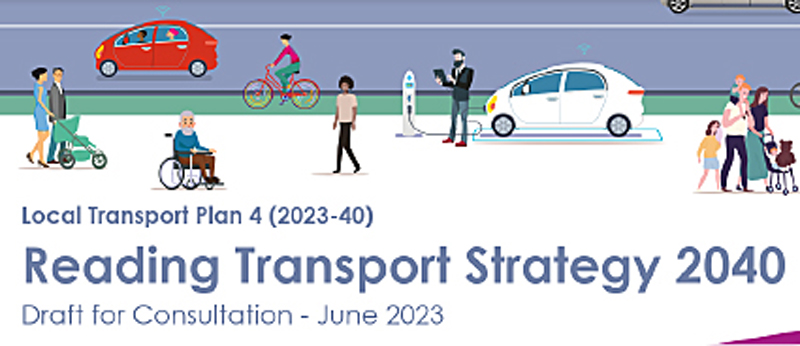In 2020 Reading Council consulted on its Transport Strategy for the period 2020-2036. Then came a pandemic and, for the stated reason that travel patterns were significantly impacted by the pandemic, the strategy was shelved.
Fast forward three years and the Transport Strategy has been taken off the shelf, given a refresh, and will now go back out to consultation.
To give a bit of background, transport authorities such as County Councils and Unitary Authorities are required by law to have a “Local Transport Plan”. The Reading Transport Strategy 2040 will be the fourth such plan that the Council has produced, the previous one being for the period 2011-2026.
The Reading Transport Strategy document is 180 pages long. The first 70 pages (Sections 1 to 4) describe the Council’s vision for Reading, what transport related things the Council has done over recent years and the transport challenges we face in the coming years. The Council’s policies are listed in Section 5 and prospective schemes for Active Travel in Section 6 (pages 122–133).
Policies
The strategy includes 32 specific policies ranging from policy on aviation to policy on streetworks. Policies that catch the eye include:
Policy 13 which states “we will reallocate road space away from the private car to provide healthier streets and encourage more sustainable, active modes of travel”.
Policy 14 which states “we will transform our walking and cycling network to be safe, clean and green and better connect people to local facilities and services, including education, retail leisure and employment”.
Policy 18 which states “we will improve the safety of vulnerable road users”.
Policy 25 which states “we will maintain our transport infrastructure to a high standard”.
Since cyclists use the road network Policy 25 (maintain our transport infrastructure) has a direct bearing on Policy 14 (transform our cycle network) and Policy 18 (improve the safety of vulnerable road users). We would like to see the strategy explicitly recognise that link and commit to improving road surface quality on the arterial routes that are by necessity key cycle corridors.
Schemes
The Active Travel schemes in the strategy related to cycling are:
- Town and Local Centre Public Space Enhancements (better access for walking and cycling)
- Strategic and Town Centre Cycle Routes
- Shinfield Road Active Travel Improvements
- Bath Road / Castle Hill Active Travel Improvements
- London Road Active Travel Improvements
- Local Cycle Routes
- Sustainable and Safer Travel to School
- Cycle Parking Mobility Hubs
- Micro-Mobility Hire Scheme
The three ‘Active Travel Improvement’ schemes listed are already at various stages of design, in fact the Shinfield Road scheme was due for completion in Summer 2023. The other listed ‘schemes’ are more nebulous, and the strategy does not go into detail of what, where and when – though reference is made to the Local Cycling and Walking Implementation Plan (LCWIP).
Funding
Funding is dealt with in Section 7. Funding is where ambition collides with reality. For example, the previous attempt at a cycle hire scheme (now rebranded micro-mobility to include scooters) collapsed, as it could not pay for itself. At present Reading Council has no dedicated ongoing budget for cycle improvements, and bids for central government funding for specific high-profile schemes such as the three Active Travel Improvement schemes listed above.
Both the previous and current version of the draft strategy include the introduction of demand management (ie charging) as a policy. Policy 22 states “we will develop demand management measures to reduce congestion and improve the quality of life for residents”. This could potentially create a revenue stream that would be reinvested into transport to help realise the aims of the strategy.
The strategy does not spell out what form demand management would take, and in recent months there have been efforts by the Council to manage expectations about managing demand. In June the leader of the Council (Councillor Jason Brock) went public to rule out any form of congestion charging – instead the focus seems to be to look at ways to manage the demand of drivers who don’t live (or vote) in Reading from passing through the town.
Targets
In terms of targets the strategy looks to increase the proportion of adults who cycle at least three times a week from 6% currently to 15% by 2040. The previous (2020) version of the strategy aimed for an increase to 10% by 2036.
At the time of writing, we do not know when the consultation on the draft strategy will begin. However, we would encourage all cyclists to engage with the consultation when it happens.
Keith Elliott
RCC Secretary



